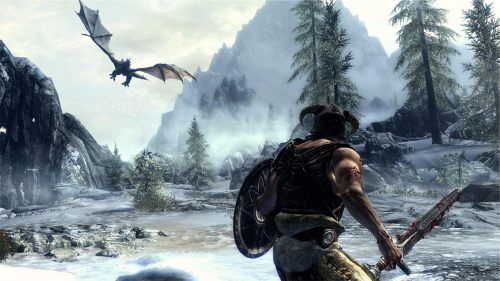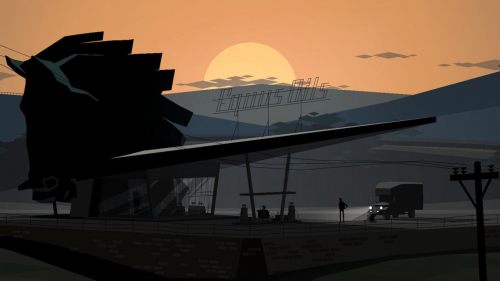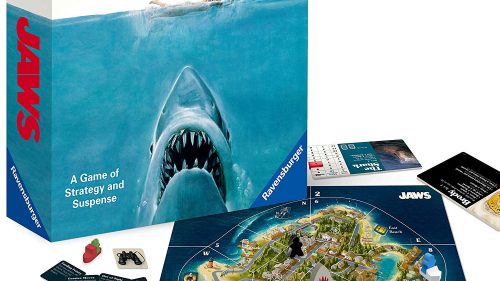THE LEGEND OF ZELDA: BREATH OF THE WILD Game Review: Link, In Parks
Look, I haven’t beaten The Legend of Zelda: Breath of the Wild. It’s an enormous game, and I want to savour each and every moment of it. I’ve had a hard enough time stopping playing long enough to write a review. Maybe I’ll never finish it, just so it’ll still be there for me. Basically, Nintendo has one-upped its own Super Mario 64 with a stunning launch title for the Nintendo Switch, and I'm kind of obsessed with it.
Breath’s scenario is much the same as the other Zelda games, which (like the Mario series) repeats its story archetypes over and over while exploring new game mechanics with each instalment. You’ve got your warrior protagonist Link, waking after a 100-year slumber; he’s trying to save princess Zelda and her kingdom Hyrule from the clutches of the evil Ganon. Again. In order to do that, he’s got to reactivate four ancient robots and unite the clans and reclaim a legendary sword and fulfill his destiny and everything else that comes in that flavour of fantasy-game bullshit. Don’t bother trying to invest in the plotline: despite some genuinely sad and funny cutscene dialogue, it’s thin and disposable. But here’s the thing: in Breath of the Wild, the story doesn’t just take a back seat to gameplay; in many ways, the gameplay is the story.
For the first time in the Zelda series, linear design has given way to a beautiful, lonely open world. That it’s Nintendo’s first crack at that is simultaneously astonishing and unsurprising: the company has instantly clocked the genre, largely thanks to its focus on game design and a refreshing lack of baggage. Rather than giving players repetitive tasks to do, as has become standard for this kind of game, Nintendo instead lets them loose in a world that’s essentially a playground for a barrelful of game mechanics.
After being woken up and given an ancient iPad that grants him special abilities, a camera, and a map, Link can more or less PayWave his way through Hyrule at his own pace. Breath of the Wild’s world design encourages self-directed exploration: there’s always something tantalising on the horizon, and reaching it will take you through half a dozen other points of interest. You’ll climb towers to unlock sections of the map, sure, but the game makes you choose your own destinations, setting map markers manually with the in-game camera. When roaming the landscape, Link can soar on a paraglider and climb nearly any surface, limited only by an upgradeable stamina bar. There’s solid animal husbandry, too, with Link befriending, patting, and riding wild horses. Virtually no space in the game is truly out of bounds - I’ll miss Link’s traversal abilities in other games.
You’ll want to explore, too, because Breath of the Wild’s Hyrule is vast, gorgeous, and surprisingly functional. Lonelier and quieter than its relatives from other studios, Hyrule is a land of bucolic pastures, ruined kingdoms, and ancient technology, with cultures thriving in desert, rivers, the upper atmosphere, and the heat of a volcanic caldera. Functionally, though, this is a largely unscripted world, running instead on AI and an impressive array of physics. Gravity, wind and water currents, heat and cold, wet and dry, fire and ice, night and day, and even electrical conductivity and magnetism play into how any given scenario might unfold. Every enemy and object in the game abides by these rules, lending Hyrule’s varied biomes a surprising consistency. Even the teleportation-like fast-travel is explained in-world. And of course, through all Link’s travels, there are plenty of monsters to fight.
Like its environment, Breath of the Wild’s combat is designed to encourage and facilitate experimentation. Link has many tools, yes - melee weapons, bows, shields, dodges, counters, status effects - but more crucially, every bit of his gear degrades with use. Ordinarily, I detest this mechanic, but Zelda deploys it so forcefully that no weapon can ever be considered permanent. With ephemeral gear, you're forced to change your play style often, sometimes in the middle of encounters - and that's where the most exciting stuff happens. In, say, Dark Souls, I'd tend to go through the whole game using only a couple of weapons, in predictable ways; in Zelda, I've used dozens, in entirely unpredictable scenarios. Every combat encounter can be approached creatively, with many sections difficult enough to require every tool at Link's disposal.
Even the fucking cooking system has a sense of discovery to it. Rather than follow recipes, you simply chuck up to five ingredients in a pot and see what happens. At worst, you'll make “dubious food,” gross enough to be pixelated but still useful, but there's a staggering range of combinations that produce helpful food items or stat-enhancing elixirs. That experimentation feels like playing with a chemistry set, and successfully creating exactly the “sneaky salt-grilled meat and seafood fry” you want elicits a delightful swell of accomplishment. It had better, too, because the endless screens of menus one must sift through to get there - menus that are unsortable in any kind of meaningful way - get old fast.
All of these mechanics, in combination, make for a robust network of simulations that enable great player creativity. Breath of the Wild attacks the open-world genre with the systems-driven attitude of a Deus Ex and the design cleanliness of Nintendo. It's a work of pure gameplay, a dazzling array of ideas all working in harmony to create terrific emergent micro-narratives. If you wonder “can I do this?” or “can I go there?,” you probably can, and you probably will.
This design approach also reveals Breath of the Wild’s sense of humour: while there are plenty of jokes and comic characters written into the game, the funniest moments happen as a result of game systems interacting. At one point, while stalking some sleeping Bokoblins, I snuck too close to their fire pit, lighting my drawn arrow on fire. Thinking myself clever, I shot one of them with it; he promptly caught on fire and flailed around a bit before dying, but not before waking up his friends and inadvertently igniting one of their wooden clubs - a club that I proceeded to get beaten to death with. This kind of scenario presents itself on the regular in Breath of the Wild. It’s great.
So strong is the physics simulation that a goodly portion of the game is actually a puzzle-platformer along the lines of Portal or Quantum Conundrum. Dotted around the map are over a hundred “shrines,” underground chambers that grant a fast-travel location upon discovery and a point towards additional health or stamina upon completion. Some offer combat trials, but the best challenge you to use your abilities in creative ways to solve puzzles. Many have multiple solutions. Some are puzzles even to find. There’s enough content in the shrines to fill an entire (pretty great) game on their own.
If I had to bring one fundamental criticism against Breath of the Wild - and admittedly, I’m maybe stretching here - it’s that the hands-off approach to story renders the game somewhat aimless. You’ll often come across many characters giving the same information, just in case you missed the last several relevant characters. Get used to hearing the phrase “100 years ago,” in particular. It comes up a lot. At times, there’s almost too much to do and to see; you could make a beeline straight for the main quest objectives, but to do that would be to skip a ton of content. That you must find your own path through that content can feel overwhelming. And the fact that the main narrative isn’t particularly enthralling can be dispiriting, no matter how hard Nintendo tries to make you believe Link and Zelda are real characters. This is a game that relies entirely on its gameplay to pull players in, and it only mostly succeeds. But hey, "mostly" is pretty good.
In Breath of the Wild, Nintendo has fixed or sidestepped countless entrenched open-world gameplay formulas, and in the process created a game of real freedom. Far from being Yet Another Ubisoft Game or a Skyrim clone, it defies easy classification. “Open-world physics puzzler combat exploration sandbox”? I guess. Importantly, it’s also extremely playful, which is a quality strangely absent in most AAA games these days. And as a launch title for the Nintendo Switch, it’s perfect: precisely the kind of game you’ll feel the itch to play wherever you go.



